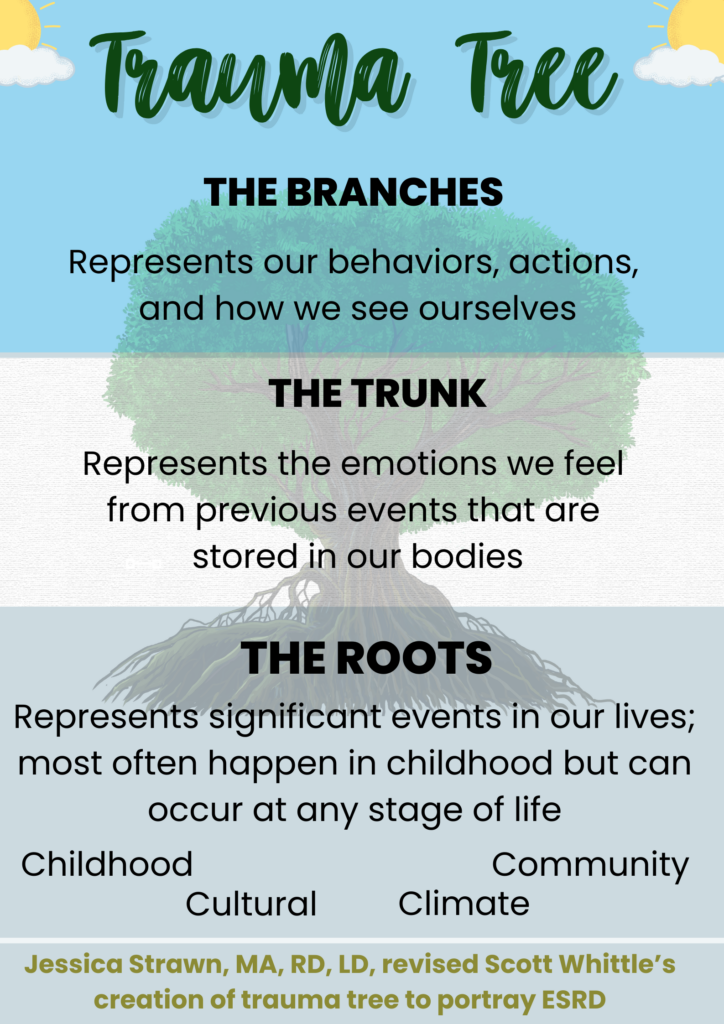
The new year has been a busy one in the world of kidney care. Medicare changes have brought more medications under the payment bundle, insurance coverage and copays are changing for patients, and new options for transplant are being explored.
Other recent events that might not seem related to kidney care can also affect our patients’ health. Immigration, inflation, the cost of food, and other hot-button issues may leave patients feeling excited, scared, confused, frustrated, angry, or hopeless.
As practitioners, we must be sensitive to what our patients are experiencing and prepared to give them space or support as the situation requires.
Recognizing Different Types of Trauma
All patients receiving dialysis have experienced trauma. Having end-stage renal disease means they face mortality daily. To preserve their lives, they must undergo invasive treatment three or more days per week. For some patients, there was no time to adjust to this scenario; they had to initiate dialysis suddenly, without even realizing beforehand that their kidneys were in poor health.
Many patients have experienced other kinds of trauma as well. I think of their experiences as components of a trauma tree, a concept created by counselor Scott Whittle to illustrate the unresolved effects of trauma. At the roots of the tree are the historically significant negative life events that shape us. The trunk represents our emotional response to past events. The branches are how we react, respond, and behave based on how we see ourselves due to our life-forming experiences.

Many of the life-changing events at the tree’s roots fall into the categories of:
- Childhood
- Cultural (eg, low economic status, religious or racial bigotry, sexism)
- Community (eg, gun violence, pandemics, terrorism, discrimination, oppression)
- Climate-related (eg, hurricanes, fires, earthquakes, tornadoes)
Research shows that many individuals with kidney disease are subject to socioeconomic inequities that lead to trauma, such as poor nutrition, inadequate health care, and illiteracy. Being aware of the role that these issues might play in your patients’ lives can help inform appropriate, individualized care.
Creating a Safe Space
Recognizing trauma can help providers better understand their patients’ emotions and behaviors. When providing care, it is helpful to view what is happening through their lens. When a patient exhibits emotions and behaviors in the clinic that seem irrational, often, it is a trauma response. Sometimes a simple, seemingly innocent action by a practitioner can trigger a response to a deep emotional wound.
We should take the time to create a safe space where patients can be heard as they receive care. We must learn to practice empathy and allow patients to safely express what they are feeling and respond with kindness and patience.
Patients with kidney disease are resilient. Their responses to trauma are part of their coping and survival skills. By recognizing this, we can act from a place of empathy and help guide patients to a place of healing while providing a safe environment for all.
References
- Nicholas SB, Kalantar-Zadeh K, Norris KC. Socioeconomic disparities in chronic kidney disease. Adv Chronic Kidney Dis. 2015;22(1):6-15. doi:10.1053/j.ackd.2014.07.002
- Schoch S. Patients, poverty, and participation in research: the hidden costs of disease and socioeconomic status. National Health Council. January 30, 2023. Accessed February 11, 2025. https://nationalhealthcouncil.org/blog/patients-poverty-and-participation-in-research-the-hidden-costs-of-disease-and-socioeconomic-status/







 © 2025 Mashup Media, LLC, a Formedics Property. All Rights Reserved.
© 2025 Mashup Media, LLC, a Formedics Property. All Rights Reserved.